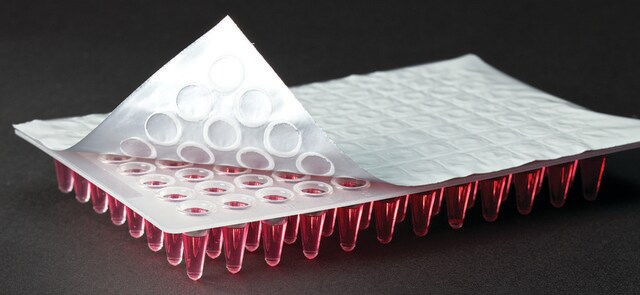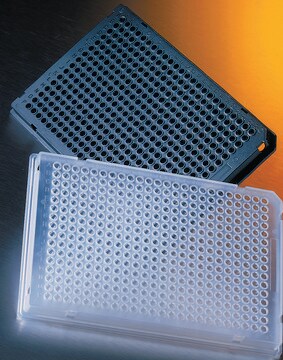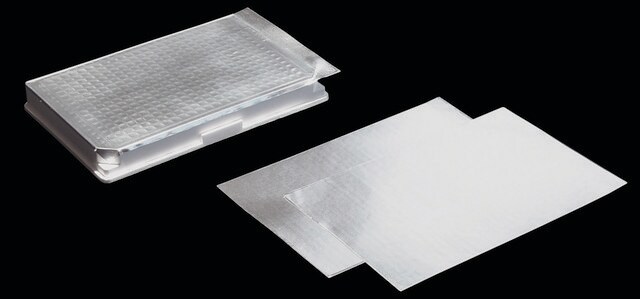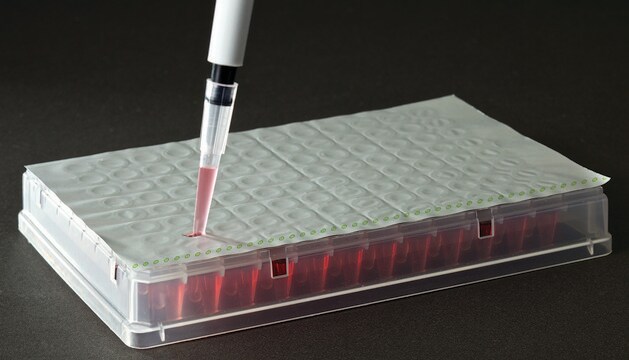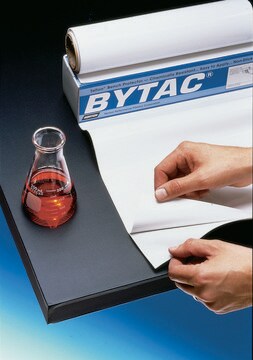General description
We are committed to bringing you greener alternative products, which adhere to one or more of The 12 Principles of Green Chemistry.This antibody is Preservative-free, produced without the harm or sacrifice of animals and exceptionally stable to allow for ambient shipping and storage if needed and thus aligns with "Waste Prevention", "Designing Safer Chemicals" and "Design for Energy Efficiency".
Click here for more information.
ZooMAb® antibodies represent an entirely new generation of recombinant monoclonal antibodies. Each ZooMAb® antibody is manufactured using our proprietary recombinant expression system, purified to homogeneity, and precisely dispensed to produce robust and highly reproducible lot-to-lot consistency. Only top-performing clones are released for use by researchers. Each antibody is validated for high specificity and affinity across multiple applications, including its most commonly used application. ZooMAb® antibodies are reliably available and ready to ship when you need them.
Specificity
Clone 1J7 is a ZooMAb® rabbit recombinant monoclonal antibody that specifically detects ATP synthase subunit (ATP5A1). It targets an epitope within 19 amino acids from the C-terminal region.
Immunogen
KLH-conjugated linear peptide corresponding to 19 amino acids from the C-terminal region of human ATP synthase subunit (ATP5A1).
Application
Quality Control Testing
Evaluated by Western Blotting in HepG2 cell lysate.
Western Blotting Analysis: A 1:1,000 dilution of this antibody detected ATP5A1 in HepG2 cell lysate.
Tested Applications
Western Blotting Analysis: A 1:1,000 dilution from a representative lot detected ATP5A1 in lysates from PC12 cells and Human heart tissue and Mouse liver tissue..
Affinity Binding Assay: A representative lot of this antibody bound ATP5A1 peptide with a KD of 1.2 x 10-6 in an affinity binding assay.
Immunohistochemistry (Paraffin) Analysis: A 1:100 dilution from a representative lot detected ATP5A1 in Human heart tissue sections.
Immunocytochemistry Analysis: A 1:100 dilution from a representative lot detected ATP5A1 in HepG2 cells.
Note: Actual optimal working dilutions must be determined by end user as specimens, and experimental conditions may vary with the end user.
Target description
ATP synthase subunit alpha, mitochondrial (UniProt: P25705; also known as ATP synthase F1 subunit alpha, ATP5F1A) is encoded by the ATP5F1A (also known as ATP5A, ATP5A1, , ATP5AL2, ATPM) gene (Gene ID: 498) in human. ATP5F1A is member of the ATPase /β chain family that is expressed in fetal lung, heart, liver, gut, and kidney. Its higher expression is detected in fetal brain, retina, and spinal cord. It is present in mitochondrial membrane and serves as an ATP synthase to produce ATP from ADP in the presence of a proton gradient across the membrane, which is generated by electron transport complexes of the respiratory chain. It is composed of two linked multi-subunit complexes: the soluble catalytic core F1 situated in the mitochondrial matrix, and the membrane-spanning component, Fo that comprises the proton channel. These two components are linked by a central stalk and peripheral stalk The F1 component consists of five different subunits ( 3, β3, 1, 1, and 1) and the Fo un
Physical form
Purified recombinant rabbit monoclonal antibody IgG, lyophilized in PBS with 5% Trehalose, normal appearance a coarse or translucent resin. The PBS/trehalose components in the ZooMAb formulation can have the appearance of a semi-solid (bead like gel) after lyophilization. This is a normal phenomenon. Please follow the recommended reconstitution procedure in the data sheet to dissolve the semi-solid, bead-like, gel-appearing material. The resulting antibody solution is completely stable and functional as proven by full functional testing. Contains no biocide or preservatives, such as azide, or any animal by-products. Larger pack sizes provided as multiples of 25 µL.
Reconstitution
300 µg/mL after reconstitution at 25 µL per vial. Please refer to guidance on suggested starting dilutions and/or titers per application and sample type.
Storage and Stability
Recommend storage of lyophilized product at 2-8°C; Before reconstitution, micro-centrifuge vials briefly to spin down material to bottom of the vial; Reconstitute each vial by adding 25 µL of filtered lab grade water or PBS; Reconstituted antibodies can be stored at 2-8°C, or -20°C for long term storage. Avoid repeated freeze-thaws.
Legal Information
ZooMAb is a registered trademark of Merck KGaA, Darmstadt, Germany
Disclaimer
Unless otherwise stated in our catalog or other company documentation accompanying the product(s), our products are intended for research use only and are not to be used for any other purpose, which includes but is not limited to, unauthorized commercial uses, in vitro diagnostic uses, ex vivo or in vivo therapeutic uses or any type of consumption or application to humans or animals.

